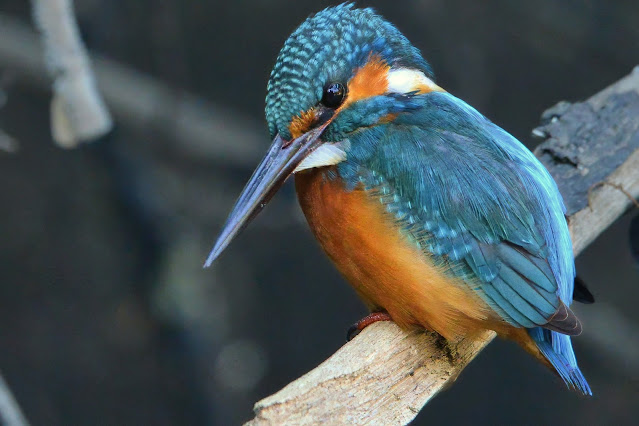Purple Swamphen (Porphyrio porphyrio) कैम, खरीम, कलीम - Birds Around Me 0126
The Purple Swamphen is a striking wetland bird, easily recognized by its deep purplish-blue plumage, vivid red bill and frontal shield, and long reddish legs with oversized toes. Roughly the size of a chicken, it measures around 45–51 cm in length and weighs between 850 and 1050 grams. Its tail is short and often flicked to reveal white undertail feathers—a behavior thought to signal alertness to predators or flockmates.
 |
| Purple Swamphen (Porphyrio porphyrio) कैम, खरीम, कलीम Jabalpur, M.P., India April 2025 |
Habitat and Distribution: This species thrives in freshwater and brackish wetlands, particularly in marshes, swamps, and reed beds with dense emergent vegetation, such as Typha and Phragmites. It prefers shallow waters with consistent levels and is found across southern Europe, Africa, Asia, and Australasia. It has even been introduced to places like Florida
Behavior and Ecology Purple Swamphens are diurnal and social, often seen in small groups. They are omnivorous, feeding on aquatic plants, shoots, seeds, insects, snails, and occasionally small vertebrates. They use one foot to hold food while feeding—a trait not common in many birds.
Their breeding system is fascinating: while some populations are monogamous, others practice communal breeding, where multiple adults (often related) help raise the chicks. Nests are built from reeds and placed above water. Both sexes incubate the eggs, and chicks are precocial, leaving the nest soon after hatching.
Environmental Significance As wetland inhabitants, Purple Swamphens are excellent indicators of ecosystem health. Their presence suggests a stable aquatic habitat with ample vegetation and low pollution. However, habitat degradation, wetland drainage, and pollution pose threats to their populations in some regions.
Conservation Status Currently listed as Least Concern by the IUCN, the Purple Swamphen benefits from a wide distribution and stable population trends. Still, local declines due to habitat loss highlight the importance of wetland conservation efforts.
 |
| Purple Swamphen (Porphyrio porphyrio) कैम, खरीम, कलीम Jabalpur, M.P., India April 2025 |
In some Assamese and Bengali folk tales, the bird is linked with omens and seasonal shifts. Its loud, croaking calls and sudden appearances in flooded paddy fields are seen as signs of the monsoon’s arrival. Farmers sometimes interpret its behavior—especially its tendency to call loudly at dawn—as a signal of upcoming rain or weather changes.
In parts of Kerala, the swamphen’s vivid colors and secretive nature have earned it a place in local children’s stories, where it’s portrayed as a clever trickster that outwits predators by hiding in reeds and mimicking the calls of other birds. These stories often teach children about the importance of wetlands and respecting nature.
Although not as deeply rooted in classical Indian mythology, the Purple Swamphen’s presence in folk memory highlights its ecological significance and how rural communities observe and interpret the natural world.
Hindi Names of Purple Swamphen (Porphyrio porphyrio): कैम, खरीम, कलीम
Birds Around Me - Unfinished List (अपूर्ण सूची): https://birds.rekabira.in/p/this-is-list-of-birds-i-clicked-since.html

.jpg)

.jpg)
Comments
Post a Comment